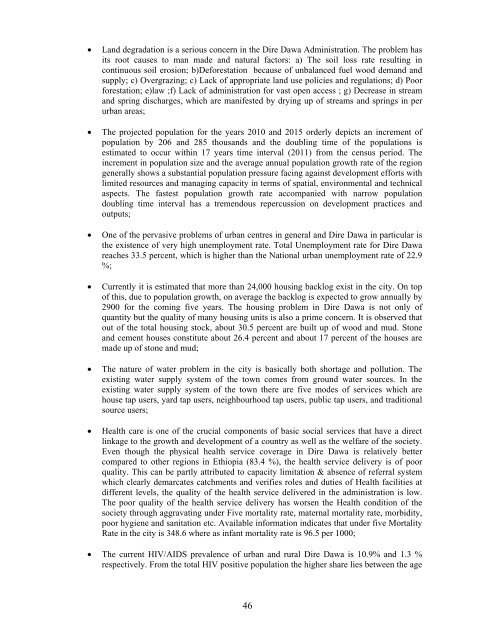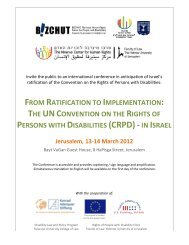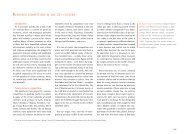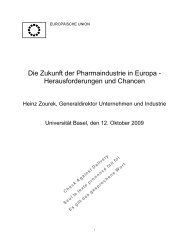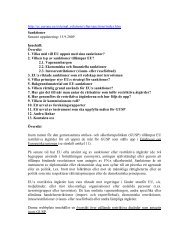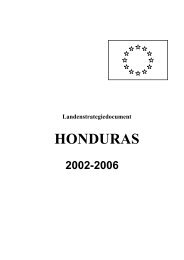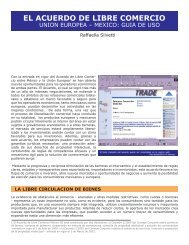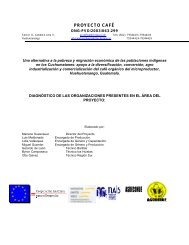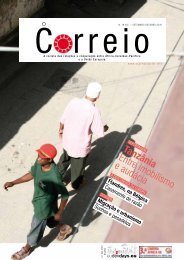Regional Reports - the European External Action Service
Regional Reports - the European External Action Service
Regional Reports - the European External Action Service
Create successful ePaper yourself
Turn your PDF publications into a flip-book with our unique Google optimized e-Paper software.
• Land degradation is a serious concern in <strong>the</strong> Dire Dawa Administration. The problem has<br />
its root causes to man made and natural factors: a) The soil loss rate resulting in<br />
continuous soil erosion; b)Deforestation because of unbalanced fuel wood demand and<br />
supply; c) Overgrazing; c) Lack of appropriate land use policies and regulations; d) Poor<br />
forestation; e)law ;f) Lack of administration for vast open access ; g) Decrease in stream<br />
and spring discharges, which are manifested by drying up of streams and springs in per<br />
urban areas;<br />
• The projected population for <strong>the</strong> years 2010 and 2015 orderly depicts an increment of<br />
population by 206 and 285 thousands and <strong>the</strong> doubling time of <strong>the</strong> populations is<br />
estimated to occur within 17 years time interval (2011) from <strong>the</strong> census period. The<br />
increment in population size and <strong>the</strong> average annual population growth rate of <strong>the</strong> region<br />
generally shows a substantial population pressure facing against development efforts with<br />
limited resources and managing capacity in terms of spatial, environmental and technical<br />
aspects. The fastest population growth rate accompanied with narrow population<br />
doubling time interval has a tremendous repercussion on development practices and<br />
outputs;<br />
• One of <strong>the</strong> pervasive problems of urban centres in general and Dire Dawa in particular is<br />
<strong>the</strong> existence of very high unemployment rate. Total Unemployment rate for Dire Dawa<br />
reaches 33.5 percent, which is higher than <strong>the</strong> National urban unemployment rate of 22.9<br />
%;<br />
• Currently it is estimated that more than 24,000 housing backlog exist in <strong>the</strong> city. On top<br />
of this, due to population growth, on average <strong>the</strong> backlog is expected to grow annually by<br />
2900 for <strong>the</strong> coming five years. The housing problem in Dire Dawa is not only of<br />
quantity but <strong>the</strong> quality of many housing units is also a prime concern. It is observed that<br />
out of <strong>the</strong> total housing stock, about 30.5 percent are built up of wood and mud. Stone<br />
and cement houses constitute about 26.4 percent and about 17 percent of <strong>the</strong> houses are<br />
made up of stone and mud;<br />
• The nature of water problem in <strong>the</strong> city is basically both shortage and pollution. The<br />
existing water supply system of <strong>the</strong> town comes from ground water sources. In <strong>the</strong><br />
existing water supply system of <strong>the</strong> town <strong>the</strong>re are five modes of services which are<br />
house tap users, yard tap users, neighbourhood tap users, public tap users, and traditional<br />
source users;<br />
• Health care is one of <strong>the</strong> crucial components of basic social services that have a direct<br />
linkage to <strong>the</strong> growth and development of a country as well as <strong>the</strong> welfare of <strong>the</strong> society.<br />
Even though <strong>the</strong> physical health service coverage in Dire Dawa is relatively better<br />
compared to o<strong>the</strong>r regions in Ethiopia (83.4 %), <strong>the</strong> health service delivery is of poor<br />
quality. This can be partly attributed to capacity limitation & absence of referral system<br />
which clearly demarcates catchments and verifies roles and duties of Health facilities at<br />
different levels, <strong>the</strong> quality of <strong>the</strong> health service delivered in <strong>the</strong> administration is low.<br />
The poor quality of <strong>the</strong> health service delivery has worsen <strong>the</strong> Health condition of <strong>the</strong><br />
society through aggravating under Five mortality rate, maternal mortality rate, morbidity,<br />
poor hygiene and sanitation etc. Available information indicates that under five Mortality<br />
Rate in <strong>the</strong> city is 348.6 where as infant mortality rate is 96.5 per 1000;<br />
• The current HIV/AIDS prevalence of urban and rural Dire Dawa is 10.9% and 1.3 %<br />
respectively. From <strong>the</strong> total HIV positive population <strong>the</strong> higher share lies between <strong>the</strong> age<br />
46


